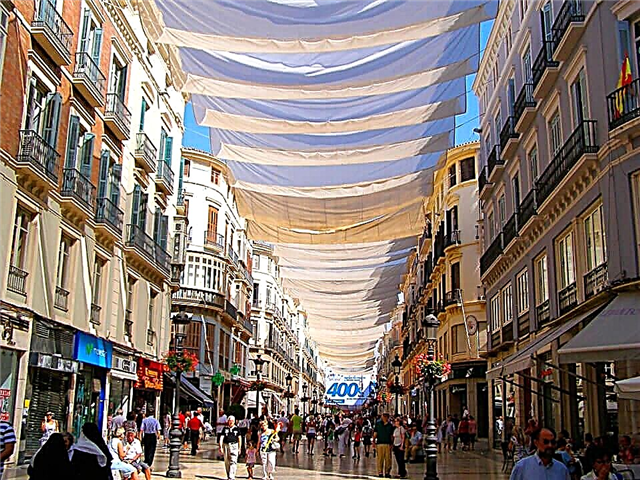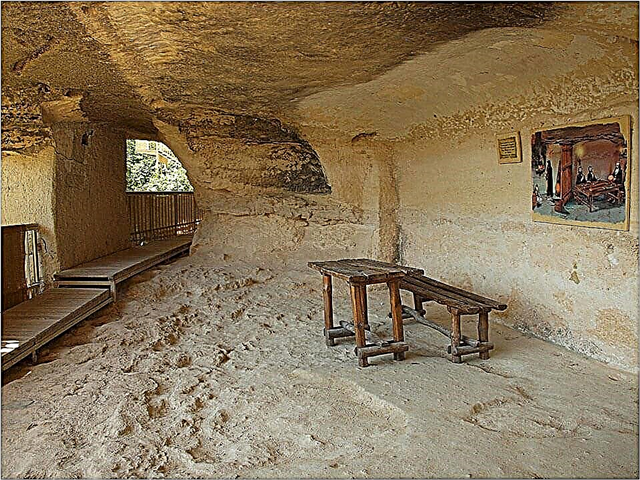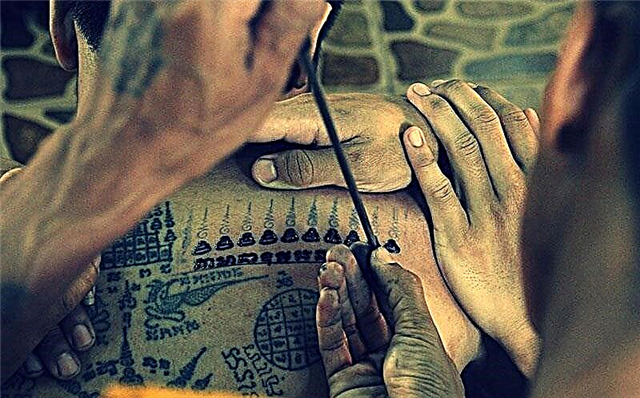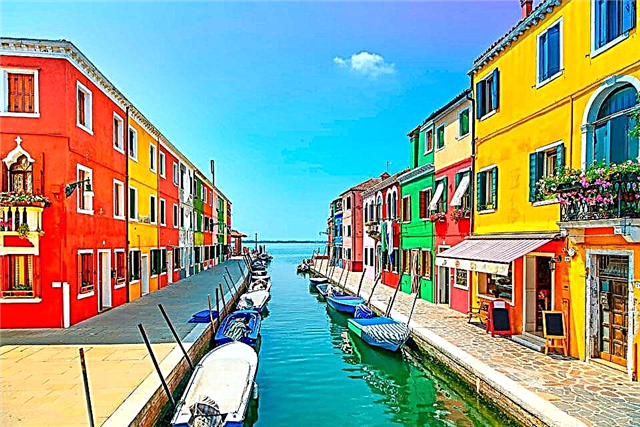When you get to the small island of Burano in Venice, it seems that you are in a fantastic fairy tale film. The fact is that all the houses here are painted in different colors, rich and bright. But it is not only the colorful buildings that amaze - people go to admire the exhibits of the lace museum, to look at the falling tower of San Martino. Just wander the picturesque streets with souvenir shops or dine at one of the best fish restaurants. Everything here is interesting and original.
History

Until the 11th century, the island was part of the Roman Empire. People lived and worked here peacefully - men were mainly engaged in fishing, women - in housekeeping and raising children. But the raids of barbarian tribes forced the inhabitants to leave their homes. They began to look for more peaceful and protected places from enemies and settled in the most remote corners of the Venetian lagoon. One of these places turned out to be an island located seven kilometers from Venice.
Why it was named Burano is not exactly established. It is assumed that representatives of a noble family with such a surname once lived here. Until 1923, the island had the status of a city, then it became one of the quarters of Venice, the area of the territory is slightly more than 21 hectares. Now it is home to about 3,000 people. Located on islands separated by narrow canals that have access to the Venetian lagoon.
Sights
Since the XYI century, the city has specialized in the production of lace. The weaving technology, according to one version, was imported from the Eastern Mediterranean, from the island of Cyprus, which was at that time a colony of the Roman Empire. At first, ready-made lace products were brought from there, then the inhabitants of the island learned how to weave themselves. But here they believe that lace was invented by the women of Burano.
During the warmer months, they helped their husbands weave fishing nets. In winter, in an effort to decorate their homes and clothes, they began to weave lace, which soon became famous throughout Europe. The peculiarity of the Buran weaving is that it is performed using a unique technology - not with the help of bobbins, as, for example, the Vologda one, it is embroidered with needles.

One of the main attractions is dedicated to this craft - the lace museum “Museo dei marletto” (“marletti” - as lace is called in Italy). It is located on Baldassare Galuppi Square in the building of a former lacemakers school. The school closed in 1979, because young girls do not want to engage in painstaking and tedious work, the ancient craft is becoming a thing of the past. The museum has an interesting program, first they show a video about the history of the creation of Venetian lace, about its production, then visitors can view an interesting collection of the best products.
On the island you can buy things made by local craftsmen, but the prices are very high. If it is not possible to purchase original lace, they buy a fake made in China at quite affordable prices. There is a romantic version of the emergence of lace craft. Some fisherman was engaged to a girl whom he loved very much. One day he went fishing. In the sea, a handsome guy tried to seduce the siren with bewitching singing, but the young man did not succumb to the charms of the seducer. For his endurance and loyalty, the siren gave him an amazing lace, woven from sea foam. The Lace Museum is located in Baldassare Galuppi Square. Opening hours from 10.00 to 18.00, ticket price 5.5 euros for adults, and 4 euros for children from 6 to 14 years old, free of charge for children under 6 years old.

The main square of the island houses another attraction that locals are proud of - the Leaning Tower of San Martino. The tower began to be built in the XY century with donations from the townspeople. Inside, the walls are decorated with frescoes by the artist Tiepolo. Due to the collapse of the ground, the bell tower began to deviate from the vertical.
Now her slope is 1.8 m, it seems that she is about to fall. The tower is saved from final destruction by the wall of another building on which it rests. When the bell tower began to tilt, the city administration decided to restore it and rectify the situation, but residents asked to leave it as it is. Now it is a symbol of the quarter, the most beautiful view of it opens from the canal bridges.
It only takes a few hours to explore the islands. And wherever the tourist goes, all roads lead to the main square of Baldassare Galuppi (Piazza Baldaccarre Galuppi). The square is named after the famous native of this place - Galuppi. Nowadays very few people know his name, but in the XYIII century he would have been a famous master of the Italian comic opera, conductor and organist. He was respectfully nicknamed "Buranello".
Grateful residents erected a monument to the composer on the square named after him. Italy is famous for its cuisine - everyone knows risotto, lasagna and pizza, as well as fish dishes. It is believed that the best fish restaurant in Venice is located on the island of Burano. It is called “Al Gatto Nero Da Ruggero” Excellent cuisine, but you need to know that the cost of one dish is from 16 to 30 euros. True, the portions are very large - one can get enough for two people.
What is the reason for the tradition of painting houses in different colors?

When they began to paint houses with colorful paint, historians cannot say, only funny legends speak about it. One of them, not too believable, is very popular with tourists. The island is surrounded by the sea, of course, many of the inhabitants were sailors. Once in their hometown after long voyages, the sailors went to taverns and other drinking establishments, where they heartily celebrated a safe arrival. To bring a sailor drunk to an insensitive state, their wives made a mark on their foreheads that matched the color of the house. So the sailor was brought home.
Another version is that each clan or clan was obliged to paint their houses in the same color. If noble persons have a family coat of arms, then here is the color of the dwelling. What appeared as the root cause of the appearance of multi-colored buildings is not known for certain, but the tradition is maintained to this day. Now this is done to attract numerous tourists.
When visiting Venice, they usually come to Burano for a few hours to see the riot of colors. Now, according to the law, no one has the right, without special permission, to repaint a house in a different color (even shutters, roofs and doors) at their own discretion, only by agreement with the city administration.
Where is it located and how to get there
The island can only be reached by sea on a water bus - vaparetto from the Fondamenta Nuove, located in the center of Venice. Route 12 goes to the island, travel time is 45-50 minutes. The ticket price for 1 hour is 7 euros. You should be aware that trams depart from several houses in Venice. In order not to confuse the landing place and not to leave for another island, you need to look at the board, where the route number and the final stop are indicated.
You can buy a ticket on the shore and on board from the conductor, the cost is the same. If tickets are purchased on the shore, they must be brought to a magnetic device, otherwise they will be invalid. And the fines for unpaid travel in Italy are impressive. A trip to Burano Island, as well as to other nearby islands of Venice, does not leave people indifferent - beautiful houses with traditionally hung linen, obligatory flowers on the windowsills, a wonderful view of the Venetian Lagoon - all this will be remembered for a lifetime.











